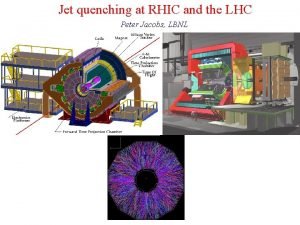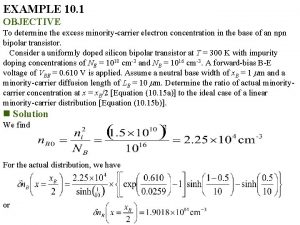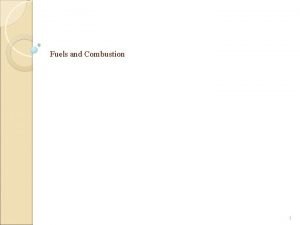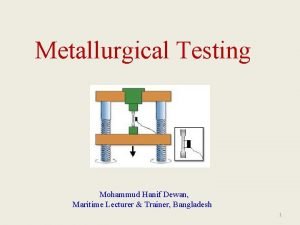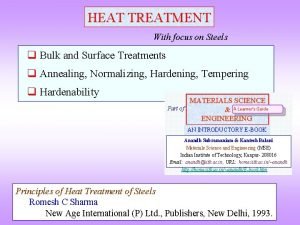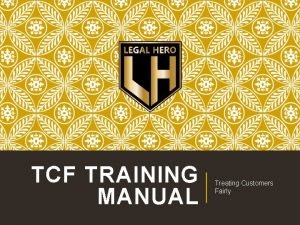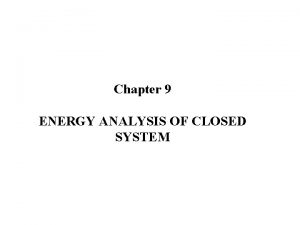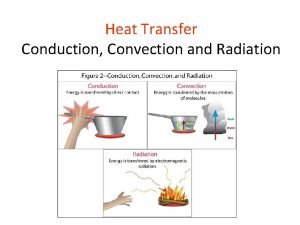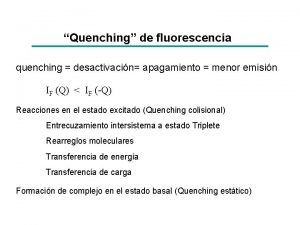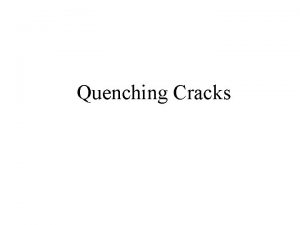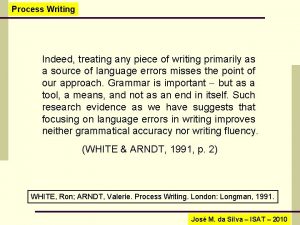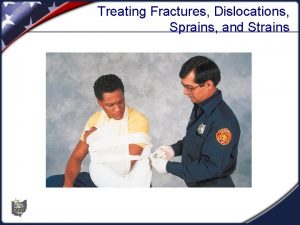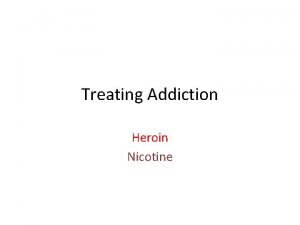Heat Treating Quenching Heat Treating Any metallurgical process





















- Slides: 21

Heat Treating & Quenching


Heat Treating Any metallurgical process that involves heating or cooling. Heat treating processes include; ◦ ◦ ◦ Heating Quenching Annealing Normalizing Tempering Surface Hardening

Heat-treating opertaions are commonly performed in an oven or furnace. (fig 11 -1, 11 -2)

Quenching A controlled cooling process that causes metal to harden. Quenching can be done from any elevated temperature. If hardness is important, the material should be heated to a temp above the transfer temperature range.

Quenching Parts are plunged quickly into the quenching medium and submerged until they are cool. Agitate or vibrate the parts so cooling takes place as quickly as possible.

Quenching Four stages of Quenching 1. 2. 3. 4. Vapor formation stage Vapor covering stage Vapor discharge stage Slow cooling stage.

Vapor Formation Stage As soon as metal is plunged into the quenching medium, the liquid starts to boil, forming a vapor film of bubbles that coat the metal. The cooling slows because the vapor film continues to form, insulating it against the liquid.

Vapor Covering Stage The film acts like a blanket covering the metal insulating it from the liquid. The bubble layer needs to be removed or the metal will not cool rapidly enough. Parts should be agitated. This causes the bubbles to fall off allowing the metal to cool rapidly.

Vapor Discharge Stage Vapor film begins to collapse by exploding off the surface. The action is violent enough to rip off the outer scale of metal. Occurs quickly (less then a second) This stage can be recognized by a crackling or sizzling sound. (water biting the steel. )

Slow Cooling Stage Metal cooling at a slower rate. No vapor film is formed.

Quenching Medium Liquid or material into which metal is plunged during the quenching process. Not all quenching materials are liquid. (Sand, Air)

Water Quenching Most Commonly used Inexpensive and convenient Provides very rapid cooling Very sudden, drastic quench that can cause internal stresses, distortion, or cracking

Brine Quenching Similar to water quneching Brine = Salt Water ( 5% - 10% Salt) Cools slightly faster then water The salt particles reduce the amount of time spent in the vapor discharge state by exploding off the surface of the metal. This action rips off the layer of bubbles forming the vapor film.

Oil Quenching More gentle cooling the water Used for more critical parts that have thin sections or sharp edges. ◦ Razor Blades ◦ Springs ◦ Knife Blades

Oil Quenching Less chance of producing internal stresses, distortion or cracking. Does not produce steel that is as hard or strong as steel quenched by water. Oil should be preheated to 100`-150`F. ◦ This will reduce the viscosity (make thinner), which permits it to circulate more easily as it quenches the part.

Air Quenching Less drastic quench then oil or water. Do to the slow rate of cooling there is much less chance of internal stresses, distortion or cracking. Strength and Hardness are not as high, unless special alloys are used in the metal. Generally used on steels with high chromium and molybdenum.

Comparison of Quenching Media Water or Brine Oil Quenching Air Quenching Most drastic Less drastic Least drastic Most hardness and strength Less hardness and strength Least resistant More resistant Most resistant to distortion and cracking

How long should the material be left in the quenching tank? Until it is cool enough to be touched by hand.

How long must the part be left in the oven for heat treatment before removing it for quenching? 1 hour for every inch of thickness. ◦ Example: A part that is 2” X 4” X 10” should be left in over for 2 hours. ◦ Example: A part the is ¼” X 6 X 10” should be left in the oven for 15 minutes.

How can distortion be avoided in thin parts? Special clays can bee applied to critical areas of a part. The clay reduces the severity of the quenching process.
 Quenching
Quenching Metallurgical base width
Metallurgical base width Otto hoffman by product oven
Otto hoffman by product oven Metallurgical testing
Metallurgical testing Wholesale heat treating
Wholesale heat treating No, there aren’t.
No, there aren’t. Any to any connectivity
Any to any connectivity Seknder
Seknder Chapter 24 lesson 2 preventing and treating stds
Chapter 24 lesson 2 preventing and treating stds Tumor treating fields mechanism of action
Tumor treating fields mechanism of action Cognitive approach to treating depression
Cognitive approach to treating depression Ethical issues in treating lgbt patients
Ethical issues in treating lgbt patients Mowrer's two process model
Mowrer's two process model Tcf outcomes 1 6
Tcf outcomes 1 6 How can treating an employee unethically backfire
How can treating an employee unethically backfire Properties of heat
Properties of heat Latent heat formula
Latent heat formula Example of dry heat
Example of dry heat Normalising heat treatment
Normalising heat treatment Rigid tank thermodynamics
Rigid tank thermodynamics Heat transfer by radiation
Heat transfer by radiation Coronoid process and coracoid process
Coronoid process and coracoid process
